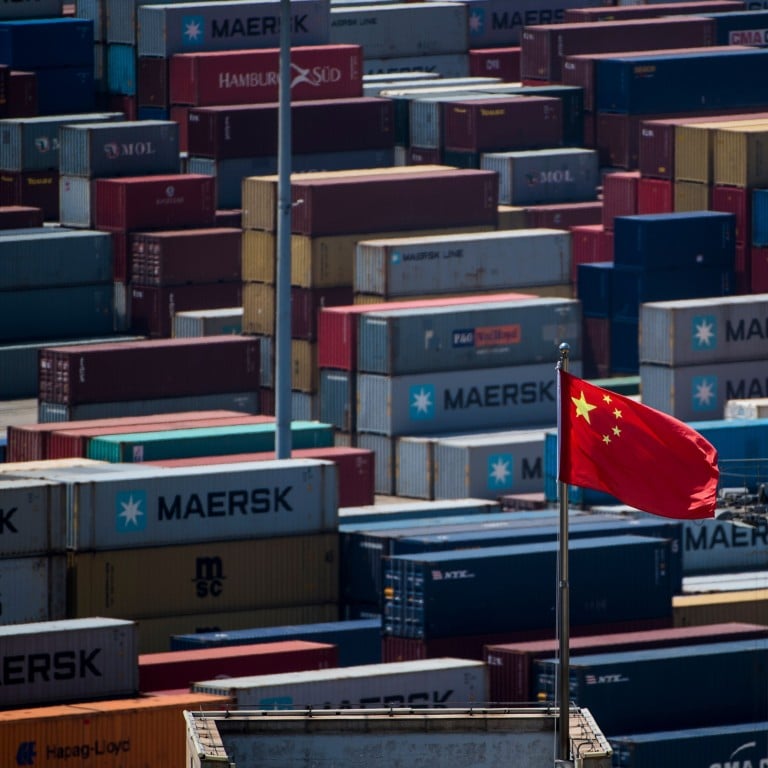
China GDP growth last year was 6.1 per cent, slowest rate for 29 years
- China’s economy grew by 6.1 per cent in 2019, the lowest growth rate since political turmoil ravaged the country in 1990, the government announced on Friday
- Figure comes amid a fierce US trade war, with industrial production down to 5.7 per cent last year and retail sales also slowing to 8.0 per cent
China’s economy grew by 6.1 per cent in 2019, the lowest annual growth rate for 29 years, the National Bureau of Statistics announced on Friday.
However, despite falling to a new low since 1990, when political turmoil drove economic growth down to 3.9 per cent, the 6.1 per cent rate met the target range of between 6.0 per cent and 6.5 per cent set by the central government at the beginning of last year, but was below the market expectation of 6.2 per cent.
The headline figure was in line with forecasts of the International Monetary Fund and the World Bank for China’s economic growth this year.
In the fourth quarter of last year, the country’s GDP growth rate was unchanged at 6.0 per cent from the July-September period. However, this matched the lowest quarterly growth on record.
Industrial production, which gauges China’s output in manufacturing, mining and utilities, grew by 5.7 per cent last year, slightly better than analysts' estimates of 5.6 per cent, but a drop from 6.2 per cent in 2018.
Fixed asset investment grew by 5.4 per cent over the course of 2019, a slight improvement on the 5.2 per cent growth reported in November in year-to-date terms, which was the joint lowest in history.
In December, the industrial economy experienced a bounce as the trade deal neared. Industrial production grew by 6.9 per cent, way above analysts’ forecasts of 5.9 per cent and the fastest rate of growth since March. Data announced last week showed that in December, China’s exports grew by 7.6 per cent, up from minus 1.3 per cent in November. Imports rose 16.3 per cent in December, up from 0.3 per cent in November.
Retail sales grew by 8.0 per cent last month, ahead of analysts’ forecasts of 7.9 per cent and unchanged from November.
Policymakers in Beijing may be relieved to have kept the official growth rate above the psychologically important 6.0 per cent mark, but more challenges await in 2020. The trade deal will take some of the pressure off, with China set to launch a huge purchasing programme that will drive up its imports from the US, but structural problems remain.
To push for negotiation in the next stage, the US will keep existing tariffs on imports from China unless the two countries manage to reach a phase-two deal,”
Furthermore, many are doubtful about the prospects of the deal holding.
“The phase one deal is only an interim agreement between China and the US. In fact, to push for negotiation in the next stage, the US will keep existing tariffs on imports from China unless the two countries manage to reach a phase two deal,” said Alicia Garcia Herrero, chief Asia-Pacific economist at Natixis. “In the bilateral evaluation and dispute resolution chapter, the agreement also makes it clear that, if the concerns cannot be resolved, the two parties hold the right to suspend an obligation, adopt a remedial measure, or in the worst case, withdraw from the agreement.”

“There might be room [to cut] according to the needs of the macroeconomy, but it would be limited,” said Sun Guofeng, head of the monetary policy department at the People’s Bank of China.
“We expect Beijing to introduce more easing measures and stimulus in coming months, but the scale of the stimulus package will likely be much smaller than those in previous easing cycles. We believe quarterly GDP growth of below 6.0 per cent is inevitable in coming quarters,” wrote Nomura analysts in a note.
“It showed that the quality of China’s economic development is improving,” Ning said.

